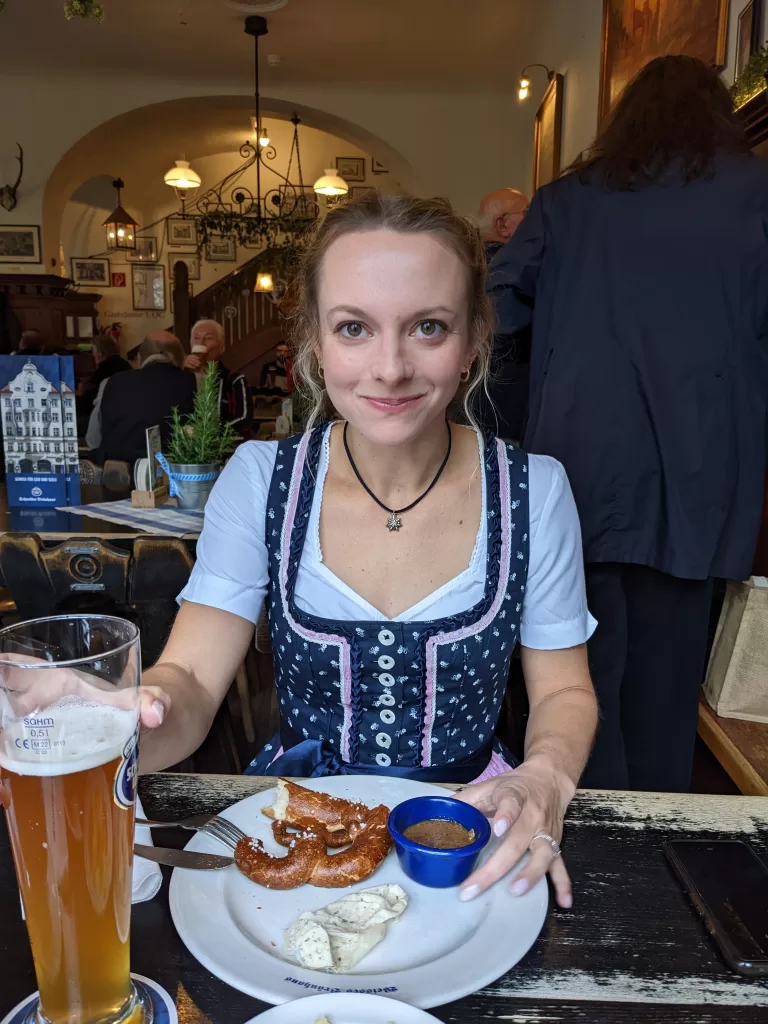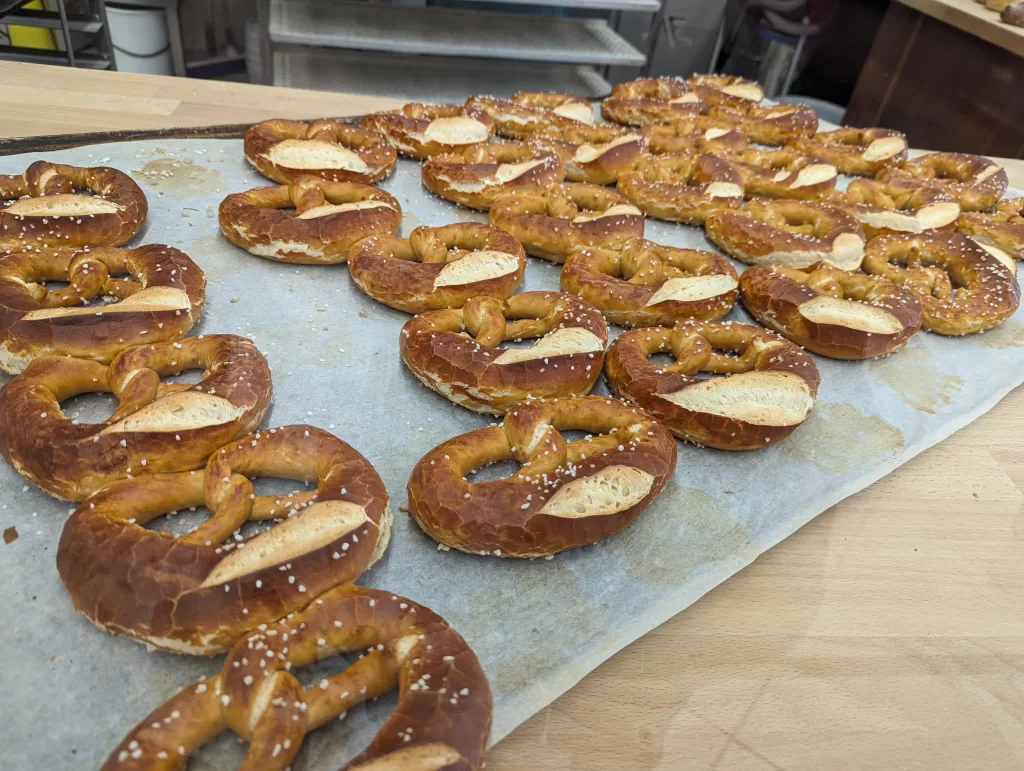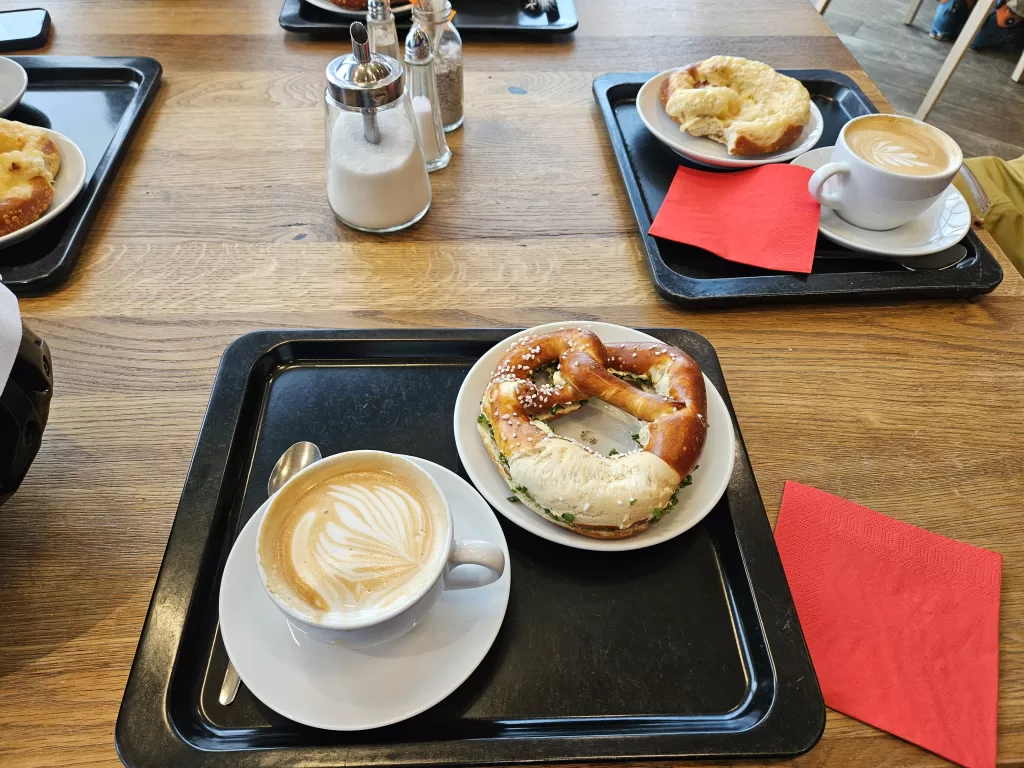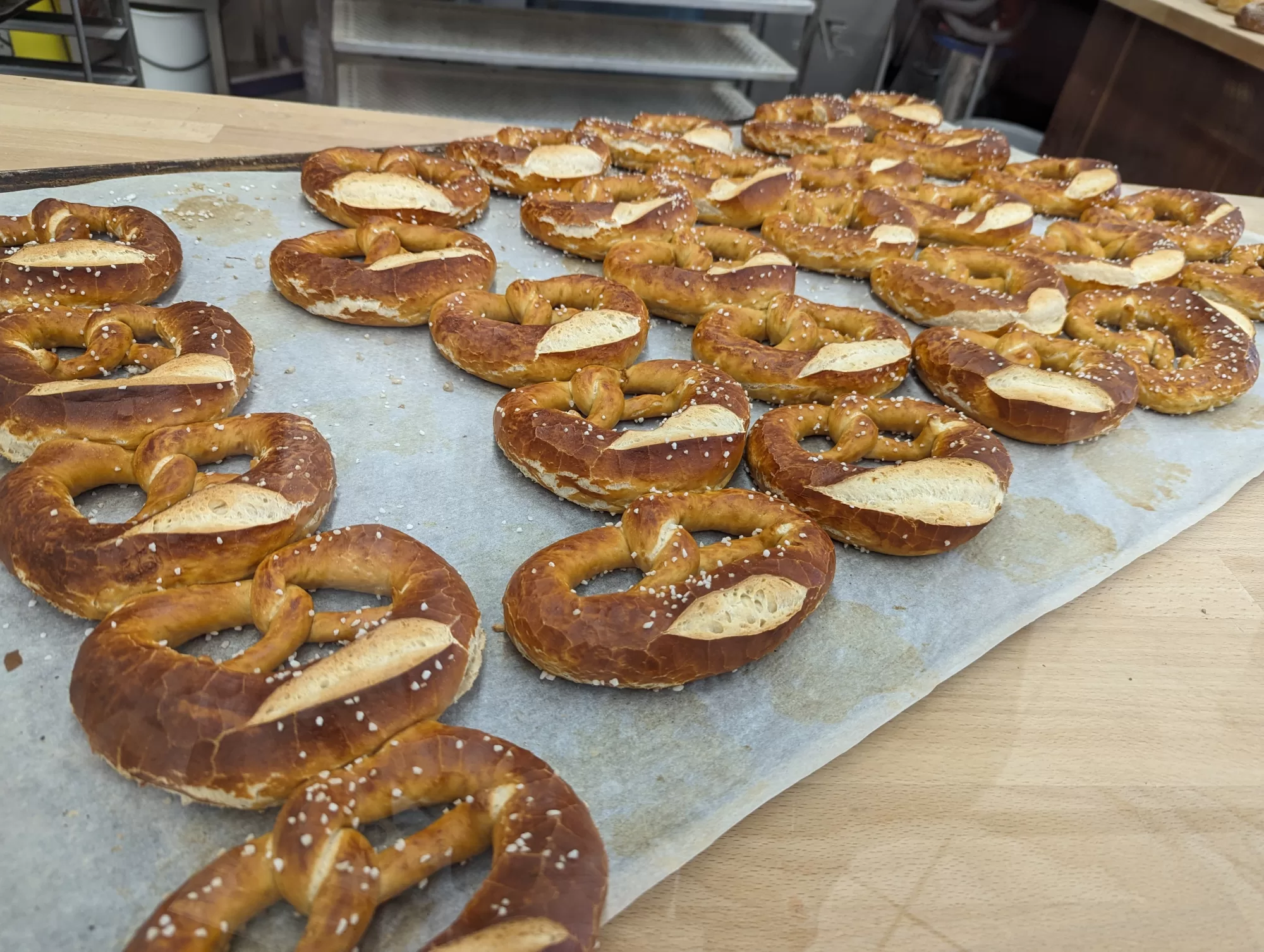Okay. It’s time to come clean. My name is Morgan and I am a pretzel addict. I don’t have a desire to change though, so please don’t try an intervention 🥨😝

I’ll eat them topped with cheese or plain.
I’ll eat them on a train or in the rain.
I would not, could not give them up.
They are so good, so good to me!
If you try them, you will see –
How lecker Bavarian pretzels can be.
The soft pretzel game here in Bavaria is strong. You can find them made fresh daily in every grocery store and bakery. The precise origins of the pretzel are somewhat debated, but most people accredit the pastry to southern Germany. Pretzels have widespread popularity throughout Austria, Switzerland, and France. Each region claims a slightly unique spin on the preparation of these treats…. Although you might miss the nuanced differences if you’re not paying extremely close attention.

So let’s dive into some interesting facts about pretzels and the culture surrounding the iconic European food. They can be labeled and marketed with a few different names. There’s the Austrian Brezel, the Swiss Bretzel, and the South German Brez’n among other pronunciations. The different endings can be traced to Latin roots but come into controversy when discussing precisely where and when pretzels were invented. Overall, the word Brezel derives from the old High German word “brezitella” and the Latin word “brachium” and can be translated as “little arms.” At first glance, all soft pretzels may look the same, but the biggest differences can be found between the Swabian Brezel and the Bavarian Breze. Most noticeable differences are seen in the “arms” and the “belly” of the twists. See table below for clarification 😊
| Name | Brezel | Breze |
| Region | Swabia | Bavaria |
| Arm characteristics | Thin arms | Thick arms |
| Belly characteristics | Purposely slit/cut | Organically cracked surface |
| Fat content | 3-10% | 3% |
The regions of Swabia and Bavaria overlap so the type of pretzel you find largely depends on the bakery you walk into. I have my favorite local spots to find pretzels in Garmisch-Partenkirchen, but am not picky enough to discriminate against one variety. Bakers who specialize in making these pastries have done so for generations. Consistency and high quality are standard.

As I write this, I can’t help but draw parallels to the Cincinnati-based Servatii Bakery and the pretzels I grew up eating from there. I can conclude that German settlers in Cincinnati upheld the pretzel making tradition with tenacity – the Servatii pretzel is quite authentic. Servatii pretzels are made fresh daily and have a nice toasty brown outside with soft interior. Using the table above, I would classify Servatii pretzels as the Bavarian variety because of the thicker arms, but they may fall somewhere in between. It’s interesting that when most Americans think of pretzels, we think of the small, hard, twisted snacks that are sold by the bag in grocery stores. This is very different from the type found in Germany. Hard pretzels were first made intentionally (rather than accidentally over baking) in Pennsylvania. As you may imagine, the tradition still originated from German immigrants who settled in the area. The downside to soft pretzels is that they don’t stay fresh nearly as long as hard pretzels, but then again, maybe it’s a benefit because it provides an excuse to make more trips to the bakery 😀
Pretzels originated sometime in the Middle Ages and were first associated with Lent due to the prohibited consumption of meat, dairy, and eggs by the Catholic Church (a relevant fun fact for this time of year). Pretzels are now enjoyed year-round. They are the most popular bread roll in Germany. It is estimated that ¾ of people consume them at least once a month and that the annual per capita consumption of pretzels is around 5.5 lbs. The German embassy in Washington reports that Germany produces around 240,000 tons of pretzels each year, with the state of Bavaria being the largest producer. Munich alone produces about 950,000 pretzels per day during Oktoberfest! They have become a cultural icon, enjoyed by visitors from around the world at festivals and by residents supporting local bakers. Since 2014, the Bavarian variant has been under a protected designation by the EU. The pastry is now included in the European register of regional specialties under the names “Bayerische Breze,” “Bayerische Brez’n” and “Bayerische Brezel.”

All this pretzel talk is making me hungry! I think it’s about time to make a quick trip to the bakery for a savory snack 😉 I’ll probably opt for my favorite preparation method which is a pretzel cut in half and spread with a bit of butter aka eine Butterbrezel. If you’re tuning in from Cincinnati, here’s your excuse to visit a Servatii to reflect on the rich history of pretzel making (and eating) we can all enjoy.

I love the joy and happiness in your faces. I am a fellow pretzel lover. I was just in Servatti over the weekend
had a cake blueberry donut. Keep living your life to the fullest.
So jealous!!!! I LOVE soft pretzels!! With butter or mustard!!! Miss you guys!!!!!!!
I am so jealous! I had the pretzel in Germany and it was the best ever. I swear I lived on them during my stay. You both look great and miss you so much! Aunt Chris
Hi Morgan
I sure enjoyed your pretzel blog. I wish I could have one now with you ! Love Gigi Jan